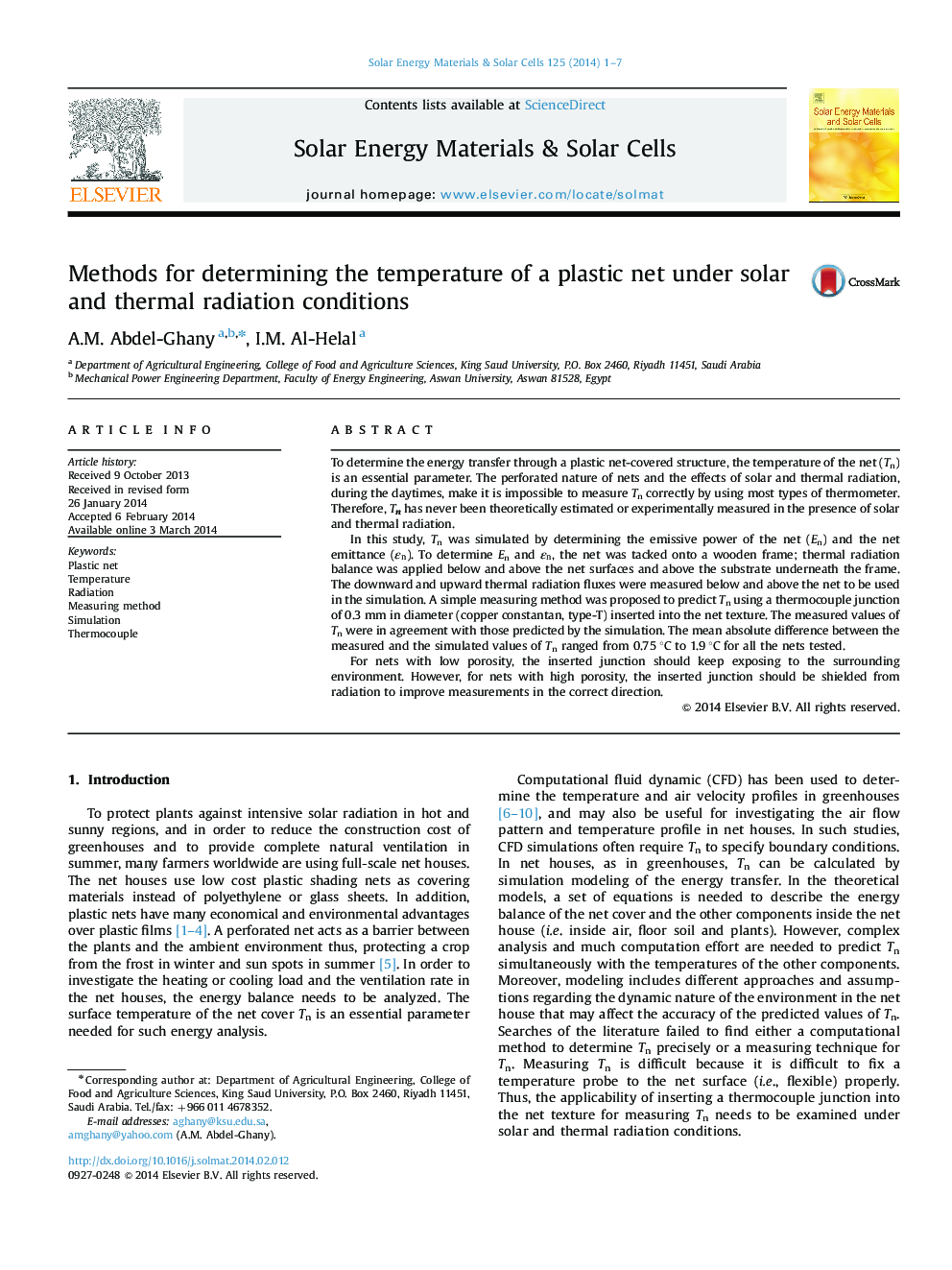| Article ID | Journal | Published Year | Pages | File Type |
|---|---|---|---|---|
| 78074 | Solar Energy Materials and Solar Cells | 2014 | 7 Pages |
•Simulation and measuring methods for determining a plastic net temperature under natural conditions were developed.•Net having a dense texture, a thermocouple junction of 0.3 mm in diameter should be inserted into the texture and keep exposed to the environment.•Net having a lean texture, the junction should be protected with a passive radiation shield.•Among several nets tested, the mean absolute difference between the measured and simulated temperatures ranged from 0.75 °C to 1.9 °C.
To determine the energy transfer through a plastic net-covered structure, the temperature of the net (Tn) is an essential parameter. The perforated nature of nets and the effects of solar and thermal radiation, during the daytimes, make it is impossible to measure Tn correctly by using most types of thermometer. Therefore, Tn has never been theoretically estimated or experimentally measured in the presence of solar and thermal radiation.In this study, Tn was simulated by determining the emissive power of the net (En) and the net emittance (εnεn). To determine En and εnεn, the net was tacked onto a wooden frame; thermal radiation balance was applied below and above the net surfaces and above the substrate underneath the frame. The downward and upward thermal radiation fluxes were measured below and above the net to be used in the simulation. A simple measuring method was proposed to predict Tn using a thermocouple junction of 0.3 mm in diameter (copper constantan, type-T) inserted into the net texture. The measured values of Tn were in agreement with those predicted by the simulation. The mean absolute difference between the measured and the simulated values of Tn ranged from 0.75 °C to 1.9 °C for all the nets tested.For nets with low porosity, the inserted junction should keep exposing to the surrounding environment. However, for nets with high porosity, the inserted junction should be shielded from radiation to improve measurements in the correct direction.
